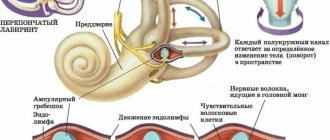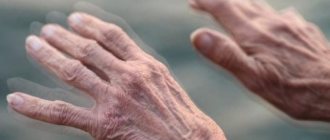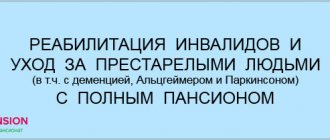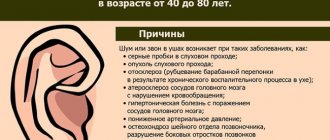Tremor is a fairly common disorder of motor function, the main symptoms of which are uncontrolled movements (shaking, vibration, trembling) of various parts of the body. The disease occurs as a result of constant involuntary muscle contractions, most often develops in older people, but can often affect adolescents. There are benign, postural and intention tremor.
Head tremor is characterized by “yes-yes” and “no-no” movements, manifests itself (intensifies) with severe excitement or at the time of drinking alcohol and is a sign of serious neuralgic disorders. Sometimes the disease is accompanied by trembling of the larynx and tongue, which causes speech impairment. The presence of tremor may indicate diseases such as Parkinson's disease, Wilson-Konovalov disease, mercury poisoning, kidney and liver failure. Symptoms of the disease vary in duration and severity.
Causes of head tremors
Cervical dystonia
A characteristic sign of cervical muscular dystonia associated with impaired neck muscle tone is isolated head tremor. It occurs when maintaining a stationary position or at the beginning of a motor act (postural-kinetic), has a frequency below 7 Hz and varying amplitude. In some patients, tremors are present at rest. Dystonic tremor intensifies when turning and tilting the head in the direction opposite to the affected muscles. The patient's performance of reverse movements or corrective gestures (touching the chin) leads to the disappearance of trembling.
Essential tremor
Among the causes of head tremor, one of the main places is occupied by the essential process. Benign tremors, the mechanism of which remains unknown, can begin at any age. The disease debuts with tremors of the hands, the head is involved later. Symmetrical trembling with essential tremor is postural in nature or increases during movement, especially at its end point (terminal). Head tremors intensify with excitement and take the form of nodding (“yes-yes”) or rocking (“no-no”) movements.
The tremor frequency varies from 6 to 10 Hz in different patients. Over time, a resting tremor may develop, which is especially pronounced in a sitting position, but does not disappear with the onset of movement, being a continuation of the postural one. Other neurological disorders in essential tremor are usually absent, sometimes minor symptoms of ataxia, plastic hypertonicity (the “jackknife” phenomenon), and weakened facial expressions are observed. Some patients are diagnosed with mild cognitive impairment.
Parkinsonism
Classic parkinsonian tremor is a tremors at rest when the muscles are completely relaxed. Its source is recognized as the central oscillators in the basal ganglia. The neck muscles are involved simultaneously with the arms or a little later. Parkinson's disease is characterized by a “yes-yes” or “no-no” head tremor that disappears with movement. The picture is complemented by slowness, a shuffling gait, and a “supplicant pose.” Muscle tone changes (the “gear wheel” symptom), and the cognitive sphere suffers.
Multiple sclerosis
Tremor is considered a typical and common symptom of multiple sclerosis. Usually it is bibrachial, that is, it affects adjacent segments - one or both arms and the head. Trembling is explained by damage to the cerebellum and its connections, therefore it usually has an intentional nature, occurs during movement and intensifies when a goal is achieved. But people with multiple sclerosis may also experience other types of it, for example, head tremors at rest, caused by the presence of a focus of demyelination in the thalamus, basal ganglia or frontal lobes.
Multiple sclerosis, accompanied by tremors, has a number of clinical features. It is characterized by an earlier onset and a predominance of cerebellar disorders at the onset. The advanced stage of the pathology is manifested by imbalance in the form of static and dynamic ataxia, and oculomotor disorders. Pyramid symptoms (muscle weakness, spasticity) and sensory disorders are much less pronounced.
Metabolic encephalopathies
As a symptom of metabolic disorders, head tremor is included in the picture of generalized trembling hyperkinesis, involving the muscles of the arms, neck and torso. It is observed at the stage of subcompensation and progresses as the brain is damaged. Hypoxic-ischemic perinatal encephalopathy in children is caused by complicated pregnancy and childbirth (asphyxia, intrauterine infections, injuries). It can manifest itself as low-amplitude tremors, pathological head positions, clonic convulsions, which are combined with suppressed reflexes.
The symptoms of hepatic encephalopathy are quite varied. With chronic intoxication, tremors of the head and hands (including “flapping”) and spasms of facial muscles develop. The pathology is characterized by slow convulsive and fast intermittent movements (choreoathetosis), ataxia, and cognitive impairment. Severe uremia in chronic kidney disease is manifested by postural-kinetic tremors, rapid muscle twitching (myoclonus), and convulsive attacks. Any metabolic encephalopathy occurs against the background of impaired consciousness.
Paraneoplastic syndromes
In the clinic of opsoclonus-myoclonus syndrome, tremor of the head, trunk and limbs is a sign of a fairly advanced process. This is an autoimmune paraneoplastic syndrome associated with the development of malignant neoplasms. Trembling is caused by damage to the cerebellar system, combined with decreased muscle tone, dysarthria, and drooling, but the most typical signs of the disease are opsoclonus and myoclonus.
Opsoclonus is understood as chaotic multidirectional eye movements, which are accompanied by convulsive twitching of the muscles of the limbs and trunk, static or dynamic ataxia. The second pathognomonic sign of the syndrome is polymorphic myoclonus, which takes the form of short muscle twitches of varying amplitude. Their predominant localizations are lips, eyelids, trunk and limbs.
Hereditary diseases
The cause of head tremors can be hereditary diseases of a neurodegenerative or demyelinating nature. Hyperkinesis is caused by changes in cerebral structures that control voluntary movements and maintain muscle tone and posture. Damage to the cerebellum, extrapyramidal system and corticospinal connections is observed in the following conditions:
- Olivopontocerebellar atrophy.
The first sign of the disease is cerebellar ataxia. It is accompanied by intention tremor, head tremors, and dysarthria. In later stages, Parkinson-like syndrome, paresis of facial muscles, and mental disorders are observed. - Pelizaeus-Merzbacher disease.
The disease is characterized by a triad of symptoms - horizontal, vertical and rotational eye movements (nystagmus), head tremors, and coordination problems. Subsequently, muscle tone increases, speech slows down, and intelligence decreases. Late stages are characterized by hyperkinesis, parkinsonism syndrome, and profound dementia. - Ataxia with vitamin E deficiency ( AVED ).
Patients present with progressive cerebellar ataxia with absent tendon reflexes. Head tremor, pyramidal insufficiency, and dysarthria often occur. Characterized by polyneuropathy, skeletal deformities and sleep disorders. - Wilson-Konovalov disease.
The trembling form is manifested by static and postural tremor of the head, similar to rocking, and the upper extremities. Choreiform hyperkinesis and bulbar disorders (impaired speech, swallowing) may be detected. The progression of the disease leads to an increase in rigidity or muscle hypotonia, and mental disorders.
Prion diseases
Head tremor in those suffering from kuru, a rare prion disease, a type of spongiform encephalopathy, is a fairly characteristic symptom. It manifests itself as severe trembling or intermittent movements, often combined with spasm of the facial muscles (“sardonic smile”). The pathology begins with dizziness and fatigue; as the neurodegenerative process progresses, the ability to control voluntary motor acts is lost, ataxia, hyperkinesis (choreoathetosis), and myoclonus appear.
Spasmodic torticollis
Let's take a closer look at this type of acquired torticollis, cervical dystonia. It is this form of the disease – spastic torticollis – that occurs more often in adults than in children. The onset of the disease occurs at the age of 30-40 years.
The exact causes of spastic torticollis have not yet been established. The main provoking factors are emotional stress and head and neck injuries.
Rotation of the head around a horizontal axis with spastic torticollis is combined with dystonic tremor, as well as pain in the neck, back of the head, and shoulder region. Dystonia is aggravated in an upright position of the body, with physical and psycho-emotional fatigue.
Spasmodic torticollis has a subacute or gradual onset. Progression of the disease is observed, as a rule, for 2-5 years, and then a plateau period often occurs. Remissions last, on average, about six months.
Cervical dystonia limits the patient’s ability to work and everyday activities. The disease is often accompanied by phobias, depression, and anxiety disorders. The severity and severity of the manifestations of the disease stimulates the search for new methods of treating cervical dystonia.
Diagnostics
Identifying head tremor is not difficult, since the symptom is clearly visible during a routine examination. A much more difficult task facing the doctor is determining the cause of the trembling. Taking into account the etiological heterogeneity of the pathological condition, a neurologist has a number of additional methods in his arsenal that provide significant assistance in the diagnostic process:
- Laboratory.
In a biochemical blood test, the area of interest includes kidney and liver tests, and acute phase indicators. Diagnosis of Wilson-Konovalov disease involves determining plasma concentrations of copper and ceruloplasmin, AVED syndrome - tocopherol; in multiple sclerosis, immunoglobulins in the cerebrospinal fluid are examined. - Neuroimaging.
Accurate verification of structural changes in the brain is the prerogative of MRI of the brain. The technique allows us to identify pathological foci (demyelination, neurodegeneration, atrophy), establish their localization and prevalence. PET-CT can be used to determine the functional activity of cerebral structures. - Neurophysiological.
EMG allows you to record a tremorogram with further assessment of the amplitude-frequency characteristics of the tremor. To analyze the safety of pathways, the method of evoked potentials (somatosensory, auditory, visual) is used. Paroxysmal neuronal activity can be detected using EEG.
To determine the causes of hyperkinesis, molecular genetic methods are of particular importance. Suspicion of paraneoplastic syndrome requires an active search for a malignant process with ultrasound of the kidneys, liver and other organs. When a head shake is detected, differential diagnosis should be made between the most common dystonic, essential and parkinsonian tremor, not forgetting other conditions.
Content:
- What is alcoholic tremor:
- Symptoms. 2.1. Main reasons.
- Principles of treatment of alcoholic tremor: 3.1. Drug treatment. 3.2. How to treat alcohol tremors at home.
The neurological disorders that occur as a result of alcoholism are very difficult to treat. And even if you manage to overcome the disease and give up drinking, you often have to engage in rehabilitation for many years. And in this case we are talking not only about the mental, but also about the physical state. Alcohol tremor is the result of prolonged ethanol intoxication and damage to both the central and peripheral nervous systems and muscles. A similar syndrome occurs in almost all alcohol addicts; in women it develops faster, which is explained by the peculiarities of metabolism and hormonal profile.
Treatment
Conservative therapy
The completeness and effectiveness of treatment for head tremor depends on eliminating the cause, but since the etiology of many diseases remains incompletely understood, the main directions of therapy remain symptomatic and pathogenetic. The situation is complicated by the fact that head tremors, unlike those localized in the hands, are less amenable to pharmacotherapy. The main groups of medications include:
- Beta blockers.
Non-selective β-blockers (propranolol, nadolol, sotalol) have shown their effectiveness in essential and other types of tremor, which is due to the inhibition of sympathetic influences. Targeted drugs (atenolol, metoprolol) can also be used. - Anticonvulsants.
A negative or insufficient response to β-blockers requires the use of anticonvulsants. Primidone, gabapentin, and topiramate have the ability to suppress the generation of tremor. Temporary improvement can be observed under the influence of clonazepam, alprazolam. - Antiparkinsonian.
Treatment of parkinsonian head tremor is usually carried out with levodopa, which, if ineffective, is treated with dopamine receptor agonists (pramipexole) or amantadine. Static tremors respond better to such therapy than action tremors.
Before actively treating head tremor, pay attention to the exclusion of stimulants from the diet (coffee, strong tea), and the abolition of certain medications. In addition to pharmacotherapy, botulinum therapy is considered an important area. Most often, injections are performed to treat dystonic head tremor. Physical methods include kinesiotherapy, wearing cervical collars, exercise therapy and massage.
Types and characteristic symptoms
If a patient's head is shaking, there are different reasons for this phenomenon.
There are several types of pathological deviation:
- Parkinson's disease. Head shaking is observed in a calm state and disappears completely if the person falls asleep.
- Minor's disease. This change is observed on the basis of heredity. The head rhythmically nods down and up, as well as left and right, but despite these indicators, the patient cannot be called mentally retarded. He, along with everyone else, thinks or performs tasks in the same way.
- Physiological. It is invisible to the person himself and can be a consequence of intoxication of the body with chemicals, alcohol, excessive anxiety or drinking strong coffee.











